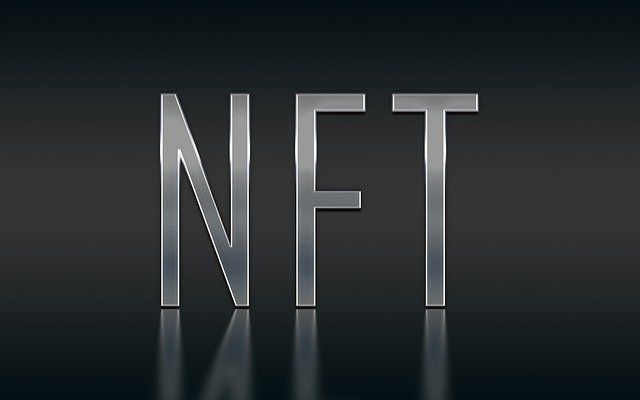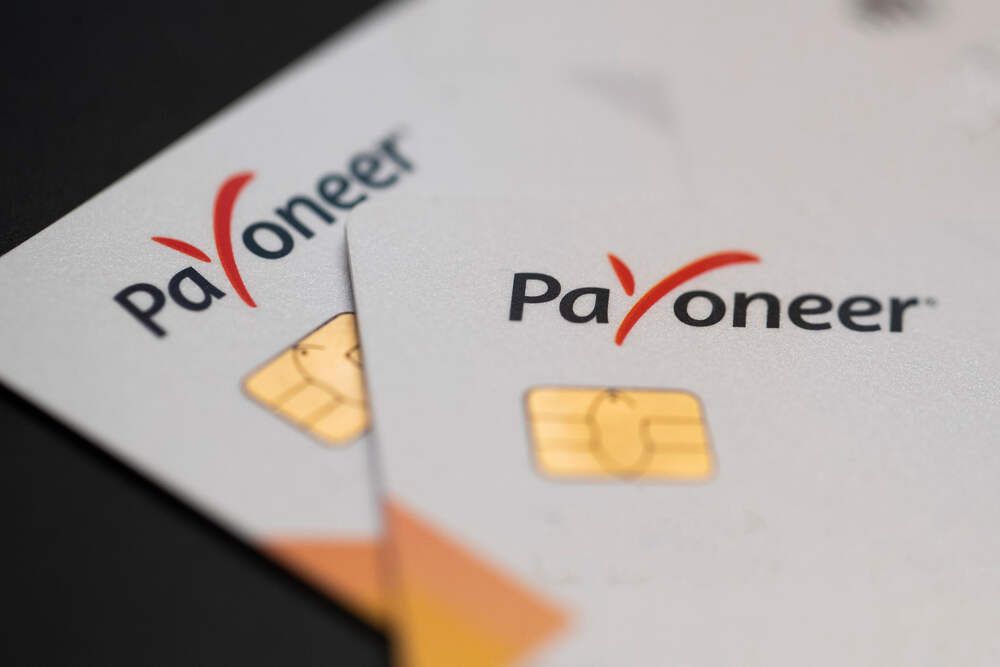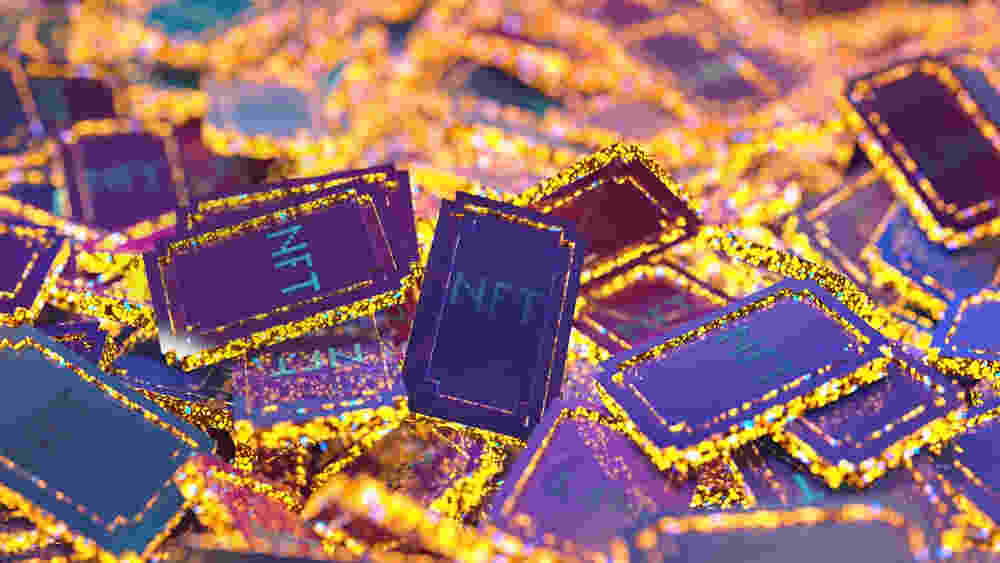How to Determine NFT Rarity? 3 Simple Ways to determine NFT Rarity
Knowing an NFT's rarity in advance will save your time and money. Plus, it will give you an edge over other traders in the marketplace with information about which type of token will become more valuable over time. Let's learn some tips and tricks in simple ways on how to determine NFT rarity!

NFTs are simply just “Crypto Tokens” like Bitcoins and Dogecoin. The only thing that makes these tokens unique is their attribute of “non-Fungibility," which means we can't mutually exchange them. NFTs have become a lucrative market. Last year, the NFT wave swept the digital world as we witnessed its exponential growth. When something is so prevalent and growing, it will have a gigantic user base that eventually leads to a prodigiously large selection. You must have observed that amid an outburst of NFTs thrashing the market, some are highly valued and sell worth millions of dollars, whereas others are less valued, being sold for much less. So, the question "What determines the value of an NFT" is the most striking to the mind of investors. The best answer to this question is “Rarity.” However, from the vast ocean of NFTs, it gets hard for the investors to decide which NFTs are rare to give them the maximum output. Therefore, to save your time and investment, we have compiled this write-up to give you an understanding of “NFT Rarity” and how to determine it before going for an investment.
What is Meant by NFT Rarity?
NFT Rarity is one of the most significant factors when evaluating NFTs. It refers to how unique a single NFT is among a collection of NFTs.
It is a common belief that the rarer an NFT is, the more valuable it would be. In simple words, the value of an NFT depends on how rare it is. Rare NFTs are more precious and sell for a handsome price. Therefore, people want to find out the Rarity of a non-fungible token in their collection and the Rarity of one they want to purchase.

How to Calculate NFT Rarity?
If an NFT is from a celebrity like Pars Hilton or a renowned NFT artist like Beeple or Justin Blau, its Rarity is easy to determine. However, when there's a considerable NFT collection with numerous NFTs, it is hard to compute as its overall Rarity depends on the Rarity of each feature.
Therefore, the most asked question people look for an answer to is “How to calculate the NFT Rarity?” Assessing the Rarity of an NFT is a complex procedure and hard for a person to determine by just looking at it. Multiple methods allow NFT enthusiasts to check the Rarity of an NFT before making further decisions. In this blog, we will discuss various ways to check NFT Rarity. Let’s start!
Simple and Straightforward Ways to determine NFT Rarity
The digital age has brought several apps and extensions to compute NFT rarity. These are the simplest ways to serve the purpose. Let’s have a brief look at them:
- NFT Rarity App
There is an NFT rarity app such as the uNFT (by Apple) to help you find tokens. This app automatically detects the NFTs that are getting high sales volume. This NFT would be considered Rare as it is high in demand. - NFT Rarity Extension
Rarity tool extension such as “RarityRanks extension" is another option to determine the Rarity of an NFT. This tool was developed by the same team who created the NFT project of Doge Studios. This tool presents you with the rarity ranking of each individual non-fungible token in a collection. OpenSea and Immutable X users can directly access this extension to view the rarity ranking of their NFT. Other users can install this extension through Mozilla Firefox and Google Chrome to browse their favorite collections.
Traditional Methods to Determine Rarity of an NFT
Typically, there are three conventional methods to determine the NFT rarity. All these methods are used in ranking spreadsheets and websites. Let’s walk through each method in detail.
1. Trait Rarity Ranking
The “Trait Rarity Ranking” method involves comparing the rarest attribute of each NFT from a collection and concluding which item is more valuable than the rest. Let’s discuss the entire procedure in detail to have a clear understanding!
On an NFT marketplace, suppose “OpenSea” when you see a collectible NFT item like “Bored Ape Yacht Club,” several traits of this collectible will be displayed. The below image from the “OpenSea” marketplace shows many attributes of one of the NFTs from the collection of 10,000, i.e., "Bored Ape Yacht Club#73."

You can observe some rare traits of an NFT in the picture. Out of all the traits displayed for this specific NFT, "Bored Ape Yacht Club#73," the rarest attribute is "Solid Gold Fur," as just 0.46% of NFTs have this trait.
Now, look at the below image showing traits of another NFT from the same collection, i.e., "Bored Ape Yacht Club#9542."

The rarest trait in this NFT is “Bored Unshaven Pizza," as just 0.26% of NFTs have this trait. According to the “Trait Rarity Ranking” method, “Bored Ape Yacht Club#9542” would be ranked number 1 as its rarest trait (0.26% rarity) is comparatively rarer than the rarest trait of “Bored Ape Yacht Club#73” (0.46% rarity).
Drawback
Though it is a simple method, its drawback lies in considering just the rarest attribute of each NFT, whereas all other attributes are ignored.
Suppose you have a collection of two NFTs having three attributes each, as displayed in the below chart:
| NFT |
Trait 1 Rarity %age |
Trait 2 Rarity %age |
Trait 3 Rarity %age |
|---|---|---|---|
| 1 |
10% |
85% |
85% |
| 2 |
12% |
12% |
12% |
Based on the “Trait Rarity Ranking method," NFT-1 would be ranked #1 as the Rarity of its rarest attribute (Trait 1) has the minimum value (10%) as compared to any trait of the 2ndNFT. But if you have a deeper look, you will find that excluding the trait 1, all the remaining traits of 2nd NFT are rarer than those of 1stNFT. So, would it be justified to consider 1st NFT rarer than the 2ndby just focusing on the Rarity of a single attribute? This is what we call the weakness of Rarity calculation by the “Trait Rarity Ranking” method, as it does not consider the overall Rarity of an NFT.
As each NFT has numerous attributes, there must be a method to add up the Rarity of all the properties of an NFT to calculate the single value for each NFT to rank several NFTs based on their Rarity.
2. Average Trait Rarity
This method involves getting the average Rarity of all attributes of an NFT and then comparing the average Rarity of all the NFTs from a collection to determine which one is the rarest.
Suppose an NFT had just two attributes:
i. Attribute with 60% rarity.
ii. Attribute with 20% rarity.
The Average Trait Rarity of this NFT would be 40%, i.e., (60+20)/2
Now consider both the Bored Ape Yacht Club NFTs (#73 & #9542) again and try to understand how their Rarity would be calculated based on this “Average Trait Rarity” method:
Average trait rarity of Ape#73 = (12+2+4+6+0.46+0.89+3)/7 = 4.05%
Average trait rarity of Ape#9542 = (13+3+2+14+0.26)/5 = 6.45%
Hence, using this method, Bored Ape Yacht Club # 73 would be considered rarer and ranked at number 1, followed by Ape#9542. This method is preferred over the “Trait Rarity Ranking” method, involving the average Rarity of all the attributes.
Drawback:
The emphasis on the overall Rarity of all traits of an NFT is high. But it ignores the value of individual super rarest trait that gets diluted by the rest of the traits while calculating their average.
3. Statistical Rarity
This method is frequently used in spreadsheets made by communities and is somehow more popular than both the methods discussed before. Here you multiply all the trait rarities to get the overall Rarity of a non-fungible token.
Suppose an NFT has two attributes, one at 20% rarity while the other at 60% rarity. Its statistical Rarity would be:
Statistical Rarity = 20% x 60% = 12%
If we consider the same two apes (#73 and #9542), their “Statistical Rarity” would be calculated as follows:
Statistical Rarity of Ape#73 = (12% x 2% x 4% x 6% x 0.46% x 0.89% x 3%) = 0.00000000070744%
Statistical Rarity of Ape#9542 = (13% x 3% x 2% x 14% x 0.26%) = 0.00000044983967%
So, by using Statistical Rarity method, Ape#73 would be considered rarer than Ape#9542.
This is a simple, straightforward, and more reliable traditional method compared to the others, but it still can't be considered the ideal one.
All the above-mentioned traditional methods either focus on a single rarest trait or consider the overall features of an NFT. So, neither of these methods can be said: “Perfect.”
Fortunately, several "Rarity Tools” are available to determine the ideal NFT Rarity. These tools have resolved the issues found in all the traditional methods by calculating the "Rarity Score" of each attribute of an NFT and the overall Rarity of all traits.

What is the “Rarity Score”?
The Rarity Score approach finds the Rarity of an NFT by computing the Rarity Score of each attribute and then the total Rarity Score of that NFT. This is considered the best way to find out how rare an NFT is and is calculated using the following formula:
[Rarity Score for a Trait Value] = 1 / ([Number of items with that trait value] / [Total Number of Items in Collection])
To calculate the Total Rarity Score of an NFT, the rarity score of all trait values is added up.
As
[Number of Items with that Trait Value] / [Total Number of Items in Collection] = Trait Rarity (in the fractions, not %age)
So, the formula can be written as:
[Rarity Score for a Trait Value] = 1 / [Total Rarity of that Trait Value]
Hence, an ideal “Rarity Score” is obtained for an NFT that helps to assess if that NFT is rare or not.
Rarity Tools
Rarity tools are based on the “Rarity Score” approach. These tools are more reliable than conventional methods as they involve Rarity Score. Let’s discuss some of the rarity tools and how to determine NFT Rarity using these tools.
1. OpenSea Rankings
OpenSea – the largest and the most well-recognized NFT marketplace, is another platform to determine NFT rarity using the “NFT Score” approach. It analyses the volume and floor price of an NFT and other statistics and displays its ranking. Hence, it helps you identify the best collections with a higher rarity score. Besides facilitating NFT sales, OpenSea is the best platform to identify the most trending and rare NFT collections to help you make an ideal investment decision. Using this platform, you will get in touch with all the NFTs being displayed on the most popular blockchains of Ethereum and Polygon.
Drawback
You can only check the traits and Rarity for each NFT but cannot determine the overall Rarity rank/score. The ideal solution to this shortcoming would be to use any other rarity tool (discussed below) while using OpenSea ranking and data.
2. Rarity.tools
One of the best and the most recognized NFT Rarity Checkers is called “Rarity.tools”. It is a free-to-use tool. The developers have created this to save your time and money in selecting a rare NFT. These NFT rarity tools are just like search engines for NFTS. The users of Solana and Ethereum can benefit from these tools. This tool can filter NFTs by total sales volume, average price, and best collections. It also provides you with the current best collections and upcoming projects. Moreover, the interface of its webpage is very simple that is easy to use, and finding the NFT rarity on this interface is just like a piece of cake!
Rarity.tools is a specific Rarity calculation method employing the standard Rarity Score formula discussed above. First, you will have to find out the Rarity Score for each attribute value. If you add up the rarity score for all attribute values, you will get the total rarity score for that NFT.
3. Rarity Sniper
Rarity Sniperfeaturing more than 870collections, mainly from Ethereum and Solana blockchains, is another well-known tool to determine NFT rarity. Its interface is very user-friendly that displays all the attributes of an NFT, including its rarity rank and score.
Moreover, this tool comes with another remarkable way to let you determine NFT rarity; this is called the "Discord Channel," which is 400,000- strong. To determine the Rarity of your NFT using this channel, you would have to type this instruction under the rarity-check section:
!rarity [collection] id/rank [id]
Where "collection" implies the name of the NFT collection. If you want to find out the Rarity of a particular NFT, you will use 'id,' but if you want to determine the Rarity of a specific rank, type 'rank' in the above command. In the end, type the asset id number. Suppose you are going to determine the Rarity of one of the NFTs from a collection of 10,000 of Bored Ape Yacht Club, i.e., Bored Ape #8817; you will give the command as follows:
!rarity boredape id 8817
As soon as you input this command, the Rarity Sniper Bot will immediately display you the rank and score of this NFT.
4. Trait Sniper – for new NFT projects
This tool is used to compare NFT attributes. If you want to get specifics of an NFT project that is relatively new, Trait Sniper is the best tool. Whenever an NFT project is introduced, this tool analyses its Rarity within two minutes. This tool comes in paid and free versions. However, the paid version presents more benefits, including real-time notifications of upcoming NFT projects and their scores.
5. HowRare.is
This tool is used just for NFTs traded at the “Solana” marketplace. This tool gives you the rarity rank and score, sales history, and all attributes of each NFT. You can also determine your NFT's Rarity by typing your Asset ID on this tool. However, “HowRare.is” completely ignores the most recognized blockchain of Ethereum, as this tool works just for the Solana platform.
“Rarity Tools” using the “Rarity Score” approach is the best choice to determine the overall Rarity of an NFT. In these tools, first, the rarity score of each attribute value is calculated. Then this score of all the features of an NFT is added up. The sum would be called the “Rarity Score” for an NFT that would define its Rarity.

Are the Rarity Tools worth using to make an NFT Investment Decision?
It is a critical question that might strike your mind before using Rarity Tools. This question needs to be addressed as most people who use these tools don't just want to know the NFT rarity for the sake of information; instead, they determine it as their decision to buy an NFT depends on it. Remember, the Rarity Tools are just a way to help you find out how rare an NFT is. If the rarity score, as calculated by these tools, is high, the chances for that NFT to excel in value are great, and you might get gigantic profits from it in the future. However, it does not mean that as soon as you find a rare NFT and invest in it, you will be able to get it sold instantly.
Remember! Unlike the cryptocurrencies that are highly-liquid markets, the NFT market is an ill-liquid market.
If you invest in an NFT project, no matter how rare it is, you can’t expect to get it sold immediately.
It means just depending on determining NFT rarity will not serve the day from an investment point of view. It would help if you had proper homework and research. Tools are great to check Rarity and scout for new NFT projects, but a clear picture of the NFT market is required if it's about investment.
Summary
NFTs are the talk of the town in the digital world. However, the NFT market is just in its nascent phase, and its hype is not going to diminish sooner. To utilize its potential in the real sense, the NFT enthusiasts must invest in the NFTs that are highly valued. The most significant factor while assessing the value of an NFT is its “Rarity.” The Rarity of an NFT is highly significant as it is directly linked with the demand and the price of an NFT. Rare NFTS are always high in demand, so they sell at higher prices. The Rarity of an NFT differentiates a project by presenting various traits and utility levels. However, with hundreds of rare non-fungible tokens within a collection where each NFT possesses multiple arbitrarily assigned attributes, finding out the rarest NFT becomes a complicated issue.
Several traditional methods are discussed in the blog that has been used to check NFT Rarity, but unfortunately, neither can be said: “Perfect.” “Average Rarity” and “Statistical Rarity” are more focused on the overall rarities of an NFT while ignoring that particular trait that is super rare. Conversely, “Trait Rarity” just focuses on that particular rarest trait. “Rarity Score” used in the “Rarity Tools” is so far the best approach to assess the Rarity of an NFT as it emphasizes the single rarest trait as well as the overall trait rarities. Hence, it delivers the results that correlate with human expectations.
However, just like any other asset, investing in non-fungible tokens involves several risks. No doubt, the tools mentioned in the blog are incredible for determining NFT rarity, but determining Rarity is not the sole criterion to focus on while buying an NFT. Besides determining the NFT Rarity, if you conduct comprehensive research and get well familiar with the market before making any purchase, you will eventually get a roaring success in the NFT space!



